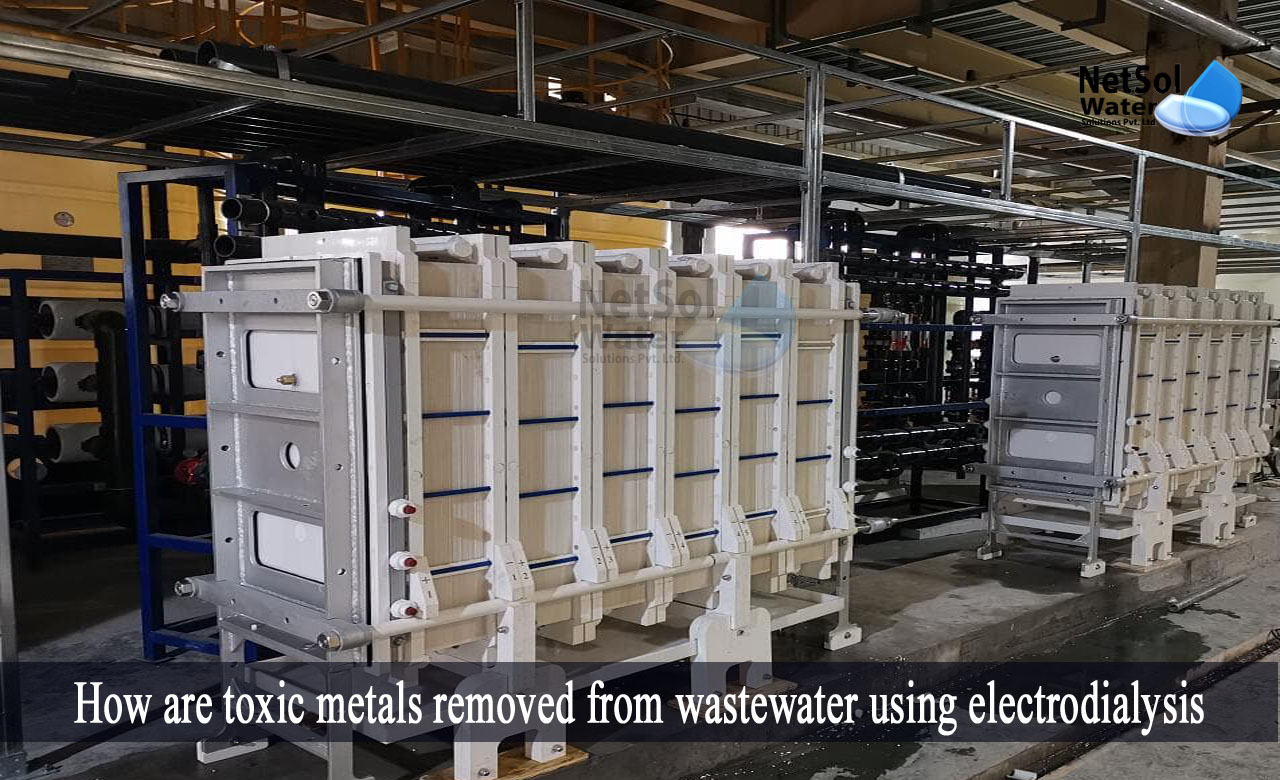What is an electrodialysis system?
It is a membrane technique that can efficiently treat brackish water,and can eliminate toxic metals from industrial wastewater. Using a DC electrical potential and a selectively permeable membrane, this method extracts ionized materials from wastewater.
When an electrical field is applied, anions travel to the anode and cations to the cathode. Cation selective membranes stop the anions and anion-selective membranes stop the cations, resulting in process flows with low ion concentration and high ion concentration.
Composition of electrodialysis system
A cell pair consisting of a cation-selective membrane and an anion-selective membrane, as well as the gaps between the membranes, constitutes an electrodialysis reversal system. An electrodialysis device is used to determine the number of cell pairs in a stack.
How are toxic metals removed from wastewater using electrodialysis?
Firstly, an electrical field is formed in an electrodialysis system by two electrodes, which are present on either side, and are submerged in a watery salt solution. As a result, an electrical field is formed around the stack. Pumping the salt solution maintains ion equilibrium. Because the salt solution is also present between the membranes, ion transport will occur due to the electrical field.
Secondly, between the electrodes, anions diffuse to the positive electrode via the anion-selective membrane, whereas cations diffuse to the negative electrode via the cation-selective membrane. Ion concentrations in the dilatant's chamber of the electrodialysis process fall, when ions leave the dilatant feed and enter the concentrate feed chamber.
Thirdly, since anions want to go to the positive electrode but are hindered by the cation-based membrane, and cations try to move to the negative electrode but are blocked by the anion-based membrane, the concentration of anions and cations in the concentrate chamber increases.
Lastly, in an electrodialysis system, the direction of ion transport is reversed by reversing the voltage of electrodes, every 30 to 60 minutes. As a result, electrically charged particles are removed from the membranes.
Applications of the electrodialysis process
- It is used to eliminate charged pollutants from wastewater. Charged pollutants include nitrate, chloride, arsenic, radionuclide, fluoride, sulfate, and others.
- The electrodialysis reversal device can desalinate both ground and surface brackish water.
- It can recover industrial water in semiconductor plants, O&G extraction, and other applications.
- Total dissolved solids can also be removed from tertiary treated wastewater, using an electrodialysis reversal system for irrigation.
- Ionized pollutants and inorganic elements in wastewater can also be controlled, using an electrodialysis reversal device.
- Industrial wastewater is desalinated and reused, and an electrodialysis reversal system in metal treatment can recover precious electrolytes and acids, by washing baths.
Benefits of the electrodialysis process
· Allowance for high turbidity
High turbidity in feedwater is managed by circulating water through channels, along the ion exchange membrane surface, while electricity drives the ionized salts across the membrane.
· Silica tolerance
Because it is an uncharged molecule, it travels across membranes without interfering with them.
· Variability of feeds
Because of its flexibility, alterations in total dissolved solids and temperature have no substantial influence on the process, and performance of the Electrodialysis System. Only voltage changes are required.
· High recovery economics
Because the supply may be refilled and the waste disposal cost is lower, the electrodialysis reversal system offers low operating expenses.
· Decreased pretreatment requirements
Electrodialysis reversal systems require less pretreatment, and deliver more robust and dependable operations.
· High salt tolerance
The electrodialysis reversal system employs an antiscalant, which improves its salt tolerance.
· Low power consumption, with high water recovery rates.
How can we assist you?
Netsol Water in India provides its clients with an Electrodialysis System for treating industrial wastewater, and reusing it for agriculture and aquaculture.
We are a well-known provider of high-quality water and wastewater treatment systems. We provide biological treatments, electrodialysis systems, physiochemical treatments, absorption treatments, and membrane filtration treatments, such as reverse osmosis, nanofiltration, and others.
Netsol Water is Greater Noida-based leading water & wastewater treatment plant manufacturer. We are industry's most demanding company based on client review and work quality. We are known as best commercial RO plant manufacturers, industrial RO plant manufacturer, sewage treatment plant manufacturer, Water Softener Plant Manufacturers and effluent treatment plant manufacturers. Apart from this 24x7 customer support is our USP. Call on +91-9650608473, or write us at enquiry@netsolwater.com for any support, inquiry or product-purchase related query.



